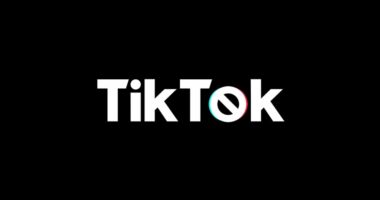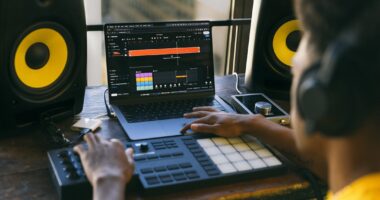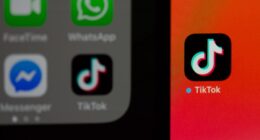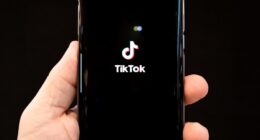Users’ listening habits, preferences, and platform behavior are all taken into account by Spotify’s sophisticated algorithm, which suggests music for them. It takes into account a number of variables, such as the time of day, user location, play count, and skip rate. Artist popularity, listening history diversity, and playlist interactions are also assessed by the algorithm. For musicians and music promoters looking to optimize their platform exposure, comprehending this algorithm is critical.
Key Takeaways
- Spotify’s algorithm takes into account factors such as listener behavior, track popularity, and recency of release to determine playlist placement.
- Utilize data-driven strategies such as targeting specific demographics, analyzing listener behavior, and leveraging playlist placement to promote music effectively.
- Optimize playlists and Discover Weekly by ensuring high-quality tracks, engaging album art, and consistent engagement with fans to increase exposure.
- Leverage collaborative playlists and playlist pitching to connect with other artists, industry professionals, and influencers for increased visibility.
- Engage with fans through social media, live events, and exclusive content to build a strong community and increase listener loyalty.
- Analyze metrics such as listener demographics, skip rates, and playlist placements to adjust music promotion campaigns for success.
- Maximize opportunities for viral hits and trending tracks by staying updated on industry trends, engaging with current events, and creating shareable content.
Music is categorized and recommended by the algorithm based on user preferences by utilizing song metadata such as instrumentation, tempo, mood, and genre. It also takes into account community engagement metrics, such as playlist additions, saves, & shares, which can raise the probability that a song will be suggested to other users. Music promoters and artists can create strategies to maximize their reach & visibility on Spotify by understanding these critical factors. Recognizing Your Goal Audience. Gain important insights into the target audience by analyzing data such as listener demographics, location, & listening habits.
With this information, artists can increase their impact by concentrating their marketing efforts in areas where listeners of their genre are most concentrated. Maximizing Ad Campaigns. Artists are able to determine which songs resonate with their audience by looking at listener behavior and engagement with particular tracks.
They can make appropriate adjustments to their promotional strategies and resource allocation thanks to this data-driven approach. Recognizing Joint Venture Possibilities and Leading Innovation. By finding bands or artists that have similar fan bases, data-driven strategies can also make collaboration opportunities easier. This results in cooperative relationships that broaden the platform’s audience and increase each artist’s visibility.
Artists may also stay ahead of the curve and take advantage of new chances for exposure and promotion by using data to find trends & patterns in the music business. Spotify playlists are an effective tool for promoting music. Artists can greatly expand their audience and visibility on Spotify by making the most of Discover Weekly & optimizing playlists. Mixing and matching songs from the artist’s catalog with those from other artists or from the same genre is a useful tactic.
By doing this, musicians enhance their chances of drawing in new admirers and followers by drawing in listeners who are already passionate about the kind of music they create. Also, musicians can expand their audience by utilizing Spotify’s Discover Weekly feature. Spotify creates a customized playlist called Discover Weekly for each user based on their listening habits and tastes. Artists can reach a larger audience of potential fans who are already inclined to enjoy their style of music by having their music featured on Discover Weekly.
Artists should concentrate on making excellent, captivating music that connects with listeners and motivates them to save or share the track in order to maximize their chances of being featured on Discover Weekly. Artists may interact with their listeners and create a vibrant Spotify community by creating collaborative playlists. Artists can cultivate a feeling of community and connection with their audience by putting together collaborative playlists and asking fans to add their favorite songs. This boosts the possibility that listeners will share the playlist with their own networks, which broadens the artist’s audience and visibility on the platform in addition to encouraging fan interaction.
Pitching playlists on Spotify is another crucial method for promoting music. Playlist pitching is contacting playlist curators who are well-known within the artist’s genre or style of music and making a request for them to add the artist’s tracks to their playlists. An extensive audience of potential fans can hear the artist’s music thanks to its inclusion in a well-known playlist, which can greatly expand the artist’s visibility and reach on the platform.
The key to pitching music to playlist curators successfully is for artists to craft a pitch that accentuates the distinctive aspects of their work and emphasizes how the curator’s audience might enjoy it. Creating a vibrant community and growing your profile on Spotify require active fan interaction. Artists can cultivate a sense of connection and loyalty among their fan base by actively engaging with them on social media, live streaming, and other platforms. This not only motivates followers to keep on giving the artist support, but it also raises the possibility that they will share the artist’s music with their own networks, increasing the artist’s visibility and audience on Spotify.
In addition to interacting directly with fans, artists can use Spotify tools like Storyline and Canvas to make engaging interactive experiences. Canvas gives musicians the ability to incorporate looping images into their songs, giving listeners a captivating & immersive experience. Conversely, storyline gives musicians the chance to divulge behind-the-scenes knowledge and anecdotes about their work, giving fans a better comprehension and appreciation of the artist’s creative process. Through the utilization of these features, artists can enhance their visibility on the platform and establish stronger connections with their audience.
recognizing the important metrics. Artists can gain valuable insights into the effectiveness of their promotional efforts by tracking important metrics like follower growth, playlist additions, saves, shares, and listener engagement. Afterwards, with the use of this data, strategies can be adjusted or improved upon to determine which ones are more effective with their target audience. Discovering Patterns & Trends.
Artists are able to find trends and patterns in listener behavior through the analysis of metrics over time, which can help guide future promotional tactics. For instance, artists can utilize this information to hone their approach and concentrate on tactics that have worked in the past if a specific kind of content or marketing campaign regularly increases listener engagement or follower growth. Improving Advertising Approaches.
On the other hand, artists can use this information to change course and modify their approach if certain tactics aren’t producing the desired results. Artists can optimize their promotional strategies and accomplish their objectives by consistently tracking and evaluating metrics. One of the main objectives for musicians looking to gain more visibility on Spotify is to optimize their chances of becoming viral hits and top songs.
Making content that connects with listeners emotionally and is highly shareable is one efficient way to accomplish this. Artists can potentially achieve viral success by crafting music that captivates listeners with powerful stories or intense emotions. This will encourage fans to share their songs with their own networks. Artists can also use social media sites and other online forums to advertise their music & raise the likelihood that it will become viral.
Artists can boost the exposure of their music and generate buzz around their songs by actively interacting with followers and influencers on social media sites like Instagram, Twitter, & TikTok. Their songs are more likely to trend on Spotify if this results in more plays, saves, shares, & ultimately higher placement in the platform’s algorithm. To sum up, successful music promotion on Spotify requires an understanding of its algorithm and the application of data-driven strategies. Through playlist optimization, fan interaction, data analysis, & capitalizing on viral hit opportunities, musicians can greatly expand their audience and visibility on Spotify. Artists can effectively promote their music and connect with a wider audience of potential fans by taking a strategic approach and having a thorough understanding of Spotify’s algorithm.
FAQs
What is Spotify’s algorithm for music promotion?
Spotify’s algorithm for music promotion is a complex system that determines which songs and artists are recommended to users based on their listening habits, preferences, and other factors. It takes into account factors such as the number of streams, user engagement, and playlist placements.
How can artists harness Spotify’s algorithm for music promotion?
Artists can harness Spotify’s algorithm for music promotion by focusing on increasing their streams, engagement, and playlist placements. This can be achieved through strategies such as releasing high-quality music, promoting their music on social media, collaborating with influential playlists and curators, and engaging with their fans.
What are some best practices for promoting music on Spotify?
Some best practices for promoting music on Spotify include regularly releasing new music, optimizing artist profiles, pitching music to Spotify playlists and curators, engaging with fans through social media and Spotify’s platform, and leveraging data and analytics to understand listener behavior.
How important is Spotify’s algorithm for music promotion?
Spotify’s algorithm is highly important for music promotion as it directly impacts the visibility and discoverability of artists and their music on the platform. By understanding and leveraging the algorithm, artists can significantly increase their chances of reaching new audiences and growing their fanbase.









